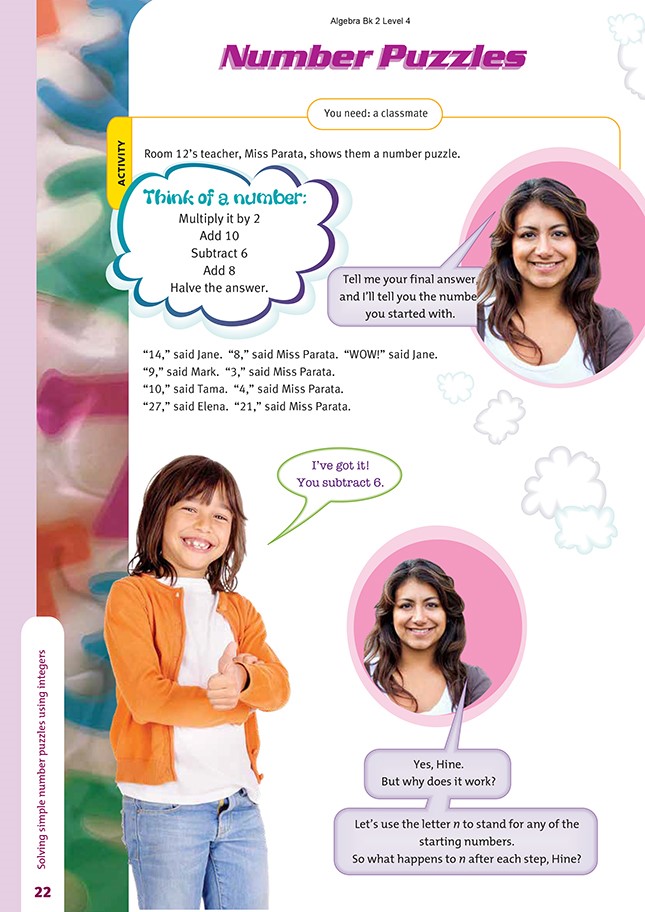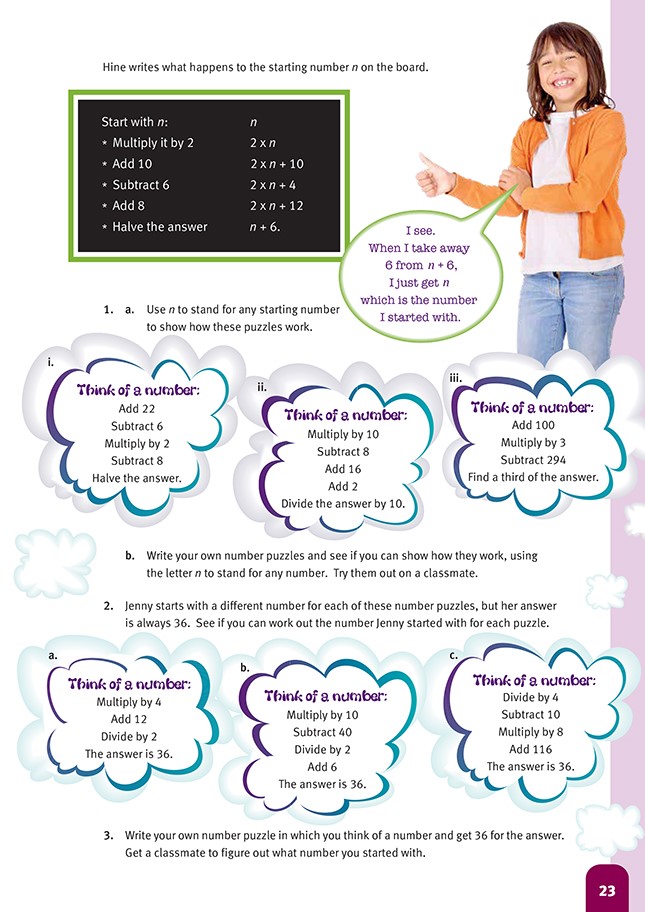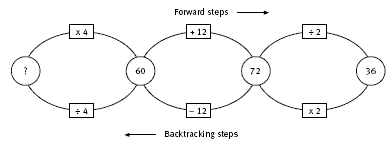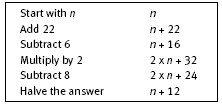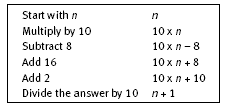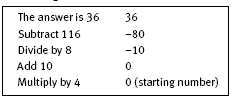This is a level 4 algebra strand activity from the Figure It Out series.
A PDF of the student activity is included.
Click on the image to enlarge it. Click again to close. Download PDF (495 KB)
write an equations to generalise a pattern
classmate
FIO, Level 4, Algebra, Book Two, Number Puzzles, pages 22-23
In this activity, students show how some simple number puzzles work by writing sets of instructions using algebraic symbols.
For example, in question 1a, instead of thinking of a particular number, say 43, we can use n to stand for any number.
Note that when the expression n + 16 is multiplied by 2, we get 2 x (n + 16) = 2 x n + 2 x 16 or 2n + 32. The value of each number or letter is doubled. Similarly, when 2n + 24 is halved, we get n + 12, which is 12 more than the value for n, the starting number.
Students who have difficulty with these puzzles may find it helpful to work through them with numbers in order to gain confidence with the process.
In question 2, the students need to work backwards, undoing each step as they go. The backtracking steps for question 2a are shown in this diagram:
The numbers in the circles are found by working backwards from the answer, 36. The starting number, 15, is found from the final backtracking step, 60 ÷ 4.
The backtracking diagram for question 2b is:
The final backtracking step, 100 ÷ 10, gives the starting number, 10.
The backtracking diagram for question 2c is:
The final backtracking step, 0 ÷ 4, gives the starting number, 0.
The backtracking diagrams are procedures that provide a careful, systematic approach to “undoing” the puzzles. The students will benefit most, however, from exploring the puzzles themselves and trying out their own strategies. It may be that their strategies reflect the backtracking ideas shown above.
More able students might be interested to see an algebraic approach to these problems. Such an approach could use the sets of instructions used in questions 1 and 2. For example, in question 2a, we have the instructions:
So every starting number ends up being multiplied by 2 and having 6 added. To find the number n so that
2 x n + 6 = 36, we can use the following steps:
If 2 x n + 6 = 36
then 2 x n = 30 (subtracting 6 from both sides)
then n = 15 (dividing both sides by 2).
In question 2b, the students will need to find n when 5n – 14 = 36 (n = 10). In question 2c, the students will need to find n when 2n + 36 = 36 (n = 0).
Answers to Activity
1. a. i. Subtracting 12 from the answer always gives the starting number.
ii. Subtracting 1 from the answer always gives the starting number.
iii. Subtracting 2 from the answer always gives the starting number.
b. Answers will vary.
2. a. The starting number is 15.
b. The starting number is 10.
c. The starting number is 0.
3. Answers will vary.
